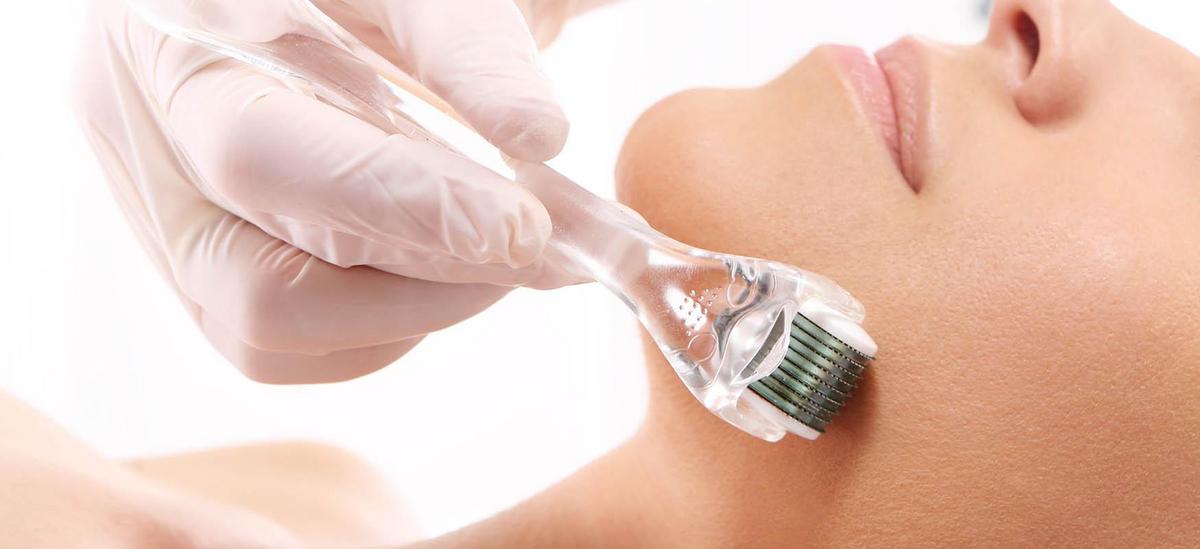TL;DR:
- Micro-needle mesotherapy treats acne scars, wrinkles, dehydration, visible pores, cellulite, and other skin concerns.
- Performed on the face and body by a doctor or cosmetologist, it stimulates collagen/elastin production via skin punctures and nutrient application (e.g., hyaluronic acid, amino acids).
- Types of mesotherapy:
- Needleless: Uses electromagnetic waves and electric pulses.
- Needle: Nutrients injected via syringe.
- Micro-needle: Uses Dermapen/roller for needle pricks and nutrient application.
- Not recommended for: Pregnant/lactating women, skin inflammation, herpes, or anticoagulant use.
- Procedure details: Depth 0.25mm–3mm; may leave redness/bruising for 1–3 days. Avoid sun exposure and exfoliation post-treatment.
- Results: Visible within days; improves skin firmness, reduces wrinkles/cellulite/acne scars/sebum; optimally repeated every 6 months in 4–6 sessions.
Micro-needle mesotherapy is for people who struggle with acne scars, wrinkles, lack of hydration, visible pores, cellulite, and many other problems. It is mostly performed in the facial area, but there are no contraindications for use on various parts of the body. Performed by an experienced cosmetologist or doctor, it will help significantly reduce or get rid of most skin problems altogether.
Types of mesotherapy
Micro-needle mesotherapy is one of the most commonly performed aesthetic medicine procedures. It is designed to improve the overall condition of the skin and positively influence its elasticity and firmness. The procedure involves stimulating the skin with micro-needles so that the skin is stimulated to produce collagen or elastin. On the punctures made beforehand, a preparation is applied to further nourish the skin. These are usually preparations with the addition of, for example, hyaluronic acid, collagen, various amino acids, or vitamins. There are three types of mesotherapy – needleless, micro-needle, and needle. It is worth knowing what each of its types consists of.
- Needleless mesotherapy – is a type of treatment that uses electromagnetic waves along with pulses of electric current, with low power. The doctor or cosmetologist performs a massage with a special head, which facilitates the penetration of active substances into the skin.
- Needle mesotherapy – this type of mesotherapy uses an injection. The doctor or cosmetologist injects nutrients into the subcutaneous tissue using a syringe.
- Micro-needle mesotherapy – in this case, micro-needles replace the syringe. The punctures alone stimulate the skin to undertake repair processes, and the effect is further enhanced by the use of a special nutrient cocktail applied to the skin.
Preparation for micro-needle mesotherapy treatment
Prior to the procedure, a consultation with a doctor or cosmetologist is necessary, where possible contraindications to the procedure are discussed, the effect the patient wants to achieve, and it is determined which parts of the body will be treated. Mesotherapy is unlikely to be performed on pregnant or lactating women or in situations where there are clear contraindications to the procedure, such as herpes, inflammation on the skin, or the use of anticoagulants. The procedure does not require any special preparation, but it is worth knowing that you should come without makeup, and do not previously use medications that reduce blood clotting, such as aspirin.
What does the procedure look like?
The procedure is usually performed with a Dermapen or a special roller, which, when applied to the face, pricks it with small needles. The needles are selected depending on the patient's needs, skin condition, and type, the techniques used, and the preparations that support the therapy. A preparation is then applied to the area of the previously made punctures to provide the skin with the necessary nutrients. The skin is punctured to a depth in the range of 0.25mm – 3mm, depending on the condition and thickness of the skin.
Micro-needle roller mesotherapy Before the procedure, a special anesthetic ointment is usually applied, and in more sensitive areas, the skin is punctured to an extremely shallow depth. Mesotherapy can also be performed on people with thin and vascular skin. After the procedure, small puncture marks or small bruises may be visible, which disappear completely in 1-3 days after the procedure. Attention should then be paid to proper skin care. Immediately after the procedure, we should avoid makeup and unnecessary touching of the areas where mesotherapy was performed and take proper care of the skin with moisturizing and regenerating preparations. Up to a few weeks after the procedure, we should avoid exposing the skin to the sun and stop using intensive exfoliation.
Effects after micro-needle mesotherapy treatment
The first effects after micro-needle mesotherapy are visible after just a few days, while the condition of the skin after the procedure further improves over time. For optimal results, it is recommended to repeat the treatment series every 6 months or so. The series is performed after 4-6 treatments, with an interval of about 2-4 weeks. The effects you can expect from micro-needle mesotherapy are:
- regeneration and firming of the skin,
- shallowing of wrinkles,
- reduction of cellulite,
- hydration and nourishment of the skin,
- reducing hair loss,
- reducing the appearance of acne scars.
Micro-needle mesotherapy is also helpful in reducing sebum secretion or modeling the facial oval. The treatment is not an invasive procedure and does not require convalescence, but it is advisable to perform it, for example, before a free weekend because of visible skin redness or minor bruising. If performing the procedure before an important event, it is advisable to perform it at least 2 weeks in advance.
Conclusion
Micro-needle mesotherapy is a safe, effective treatment for boosting skin health. It improves hydration, reduces wrinkles, minimizes scars, and enhances skin elasticity. This blog explored its types, preparation steps, and post-treatment care. If you’re seeking long-lasting skin rejuvenation, this procedure is a worthwhile option. Always consult a skilled professional for optimal results.






